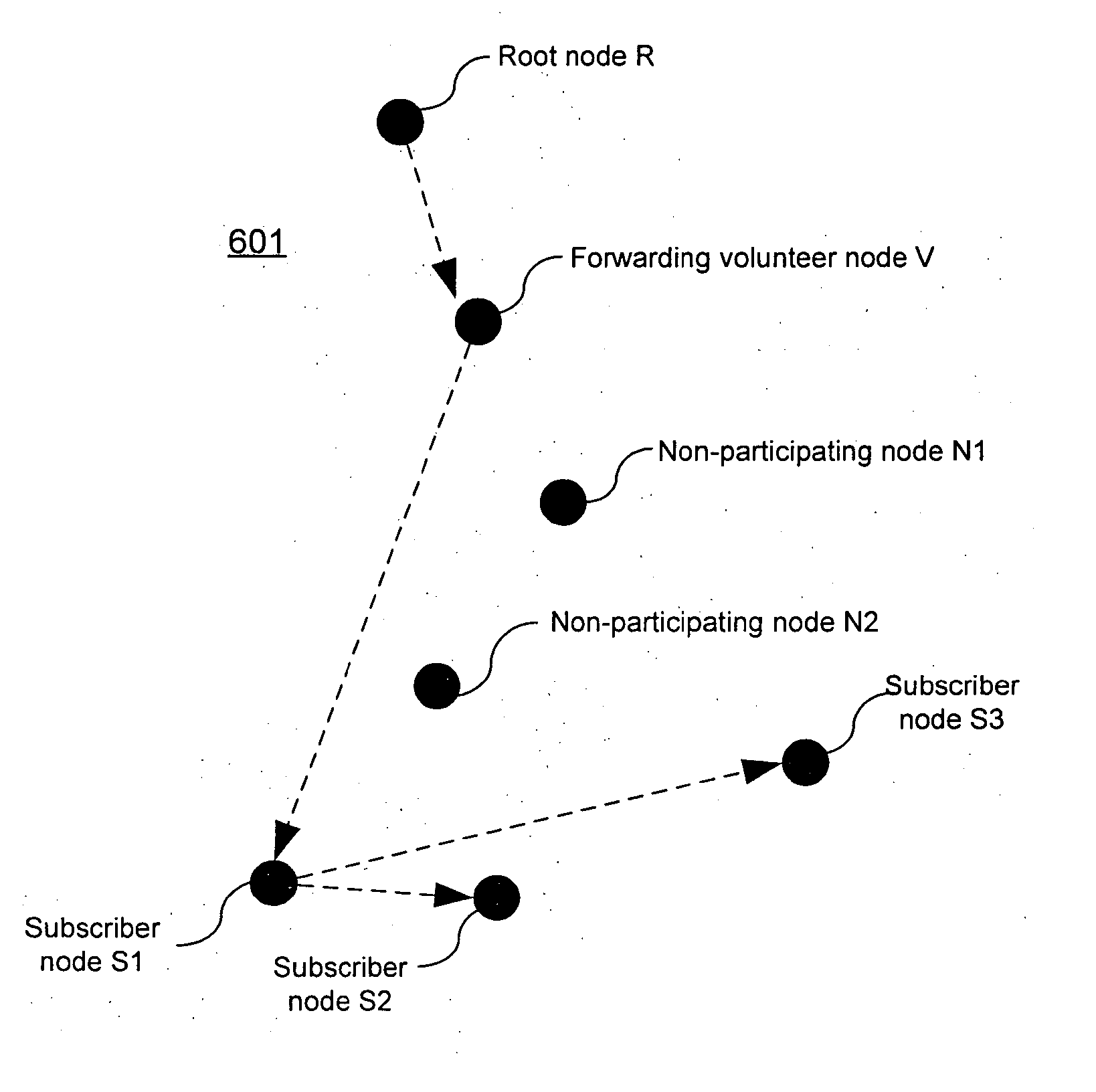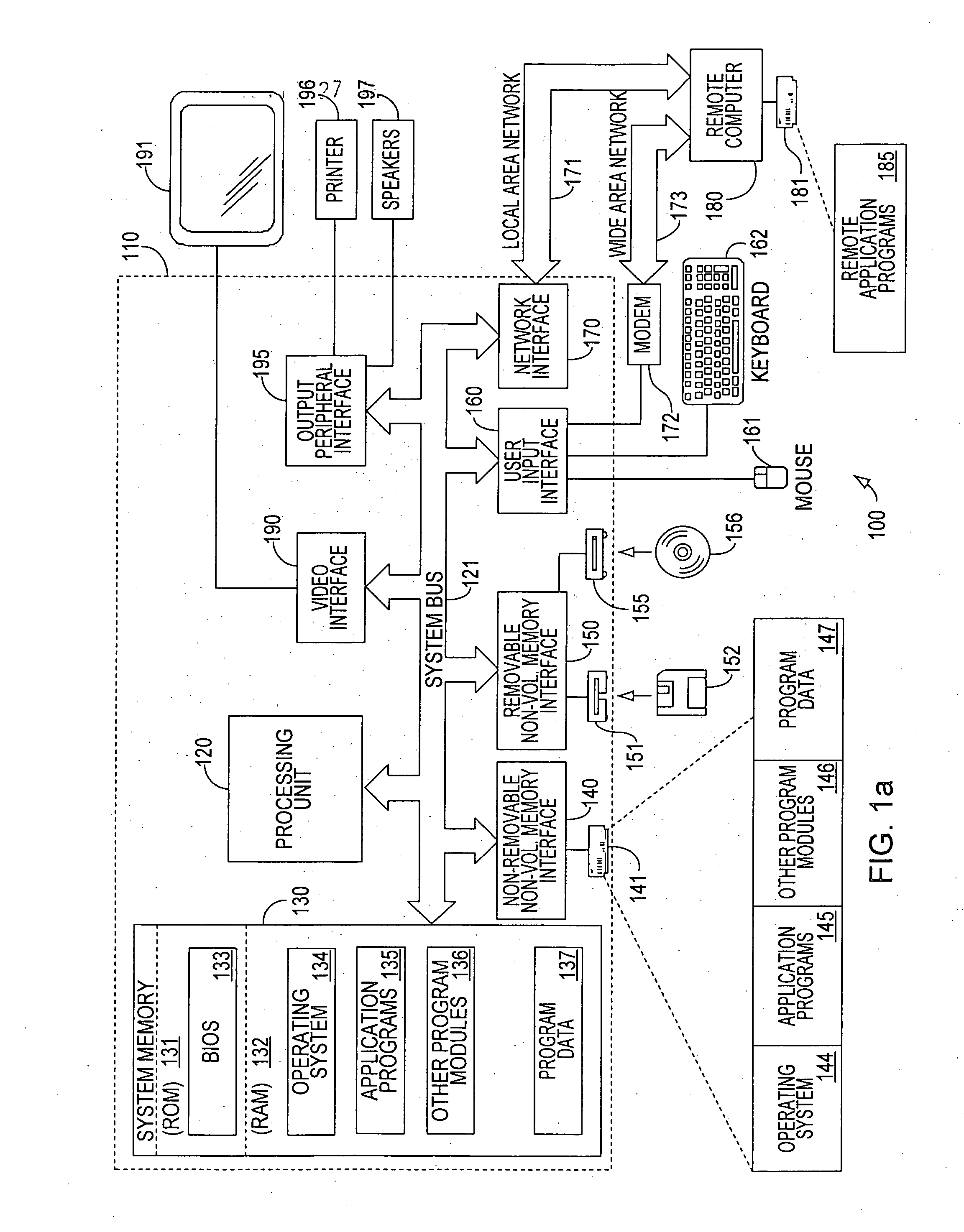Scalable, fault tolerant notification method
a notification method and fault-tolerant technology, applied in data switching networks, special service provisioning for substations, digital transmission, etc., can solve problems such as not providing support for application-specific routing
- Summary
- Abstract
- Description
- Claims
- Application Information
AI Technical Summary
Benefits of technology
Problems solved by technology
Method used
Image
Examples
first embodiment
[0061] In accordance with the first embodiment, FIG. 3 depicts a set of nodes in an overlay network 300 divided into network regions, where an organization owns each network region. The multicast tree 303 includes a subset of nodes in the overlay network, wherein each node in the multicast tree 303 is located in network region 301 owned by Organization B. Because the root node 302 of multicast tree 303 is located in a network region 301 owned by Organization B, Organization B is said to own the multicast tree 303. Furthermore, each node in the overlay network 300 has a node name 205. FIG. 2d shows that a node name 205 comprises an organizational prefix 211 and an organization-relative suffix 212. The organization-relative suffix 212 can encode a geographic locality within an organization, thereby constraining the multicast dissemination tree to a network region within the network region of the organization.
[0062] An embodiment of the invention provides a feature that prohibits nodes...
second embodiment
[0079] The present invention derives an SV tree from each Scribe tree it employs. This tree is comprised of all the subscriber and “volunteer” forwarding nodes in the Scribe tree. In FIG. 6b the SV tree 601 contains root node R, volunteer node V1, and subscriber nodes S1, S2, and S3. the invention employs both a Scribe tree and an associated SV tree to implement each multicast tree that it creates. The Scribe tree is the result of subscription messages that are routed by newly-subscribing overlay nodes towards the root node of a multicast tree. The Scribe tree provides a scalable way for clients to join a multicast tree. The associated SV tree is used to actually disseminate event notification messages. The SV tree provides a scalable way to forward event traffic that employs only willing participants.
[0080] An SV tree is constructed by having nodes from the associated Scribe tree that do not wish to participate in forwarding event traffic delegate their forwarding duties to some de...
third embodiment
[0102] A further embodiment of the invention employs multiple multicast trees to ensure reliable delivery of event notification messages in the face of both failed and malicious multicast tree nodes. In accordance with the third embodiment, FIG. 7 depicts a plurality of parallel multicast trees. Primary multicast tree T1 includes root node R1 and subscriber S1. Secondary multicast tree T2 includes root node R2 and subscriber S1. Secondary multicast tree T3 includes root node R3 and subscriber S1. Secondary multicast tree T4 includes root node R4 and subscriber S1. Publisher P1 sends event notification messages to each multicast tree T1-4 in parallel, and each tree delivers those messages to subscriber S1 in parallel. Thus, if there is a malicious node in primary multicast tree T1 preventing delivery to a subscriber, delivery may still occur through a parallel secondary multicast tree sharing the same subscriber. Because the cost of maintaining parallel trees is only the memory space...
PUM
 Login to View More
Login to View More Abstract
Description
Claims
Application Information
 Login to View More
Login to View More - R&D
- Intellectual Property
- Life Sciences
- Materials
- Tech Scout
- Unparalleled Data Quality
- Higher Quality Content
- 60% Fewer Hallucinations
Browse by: Latest US Patents, China's latest patents, Technical Efficacy Thesaurus, Application Domain, Technology Topic, Popular Technical Reports.
© 2025 PatSnap. All rights reserved.Legal|Privacy policy|Modern Slavery Act Transparency Statement|Sitemap|About US| Contact US: help@patsnap.com



